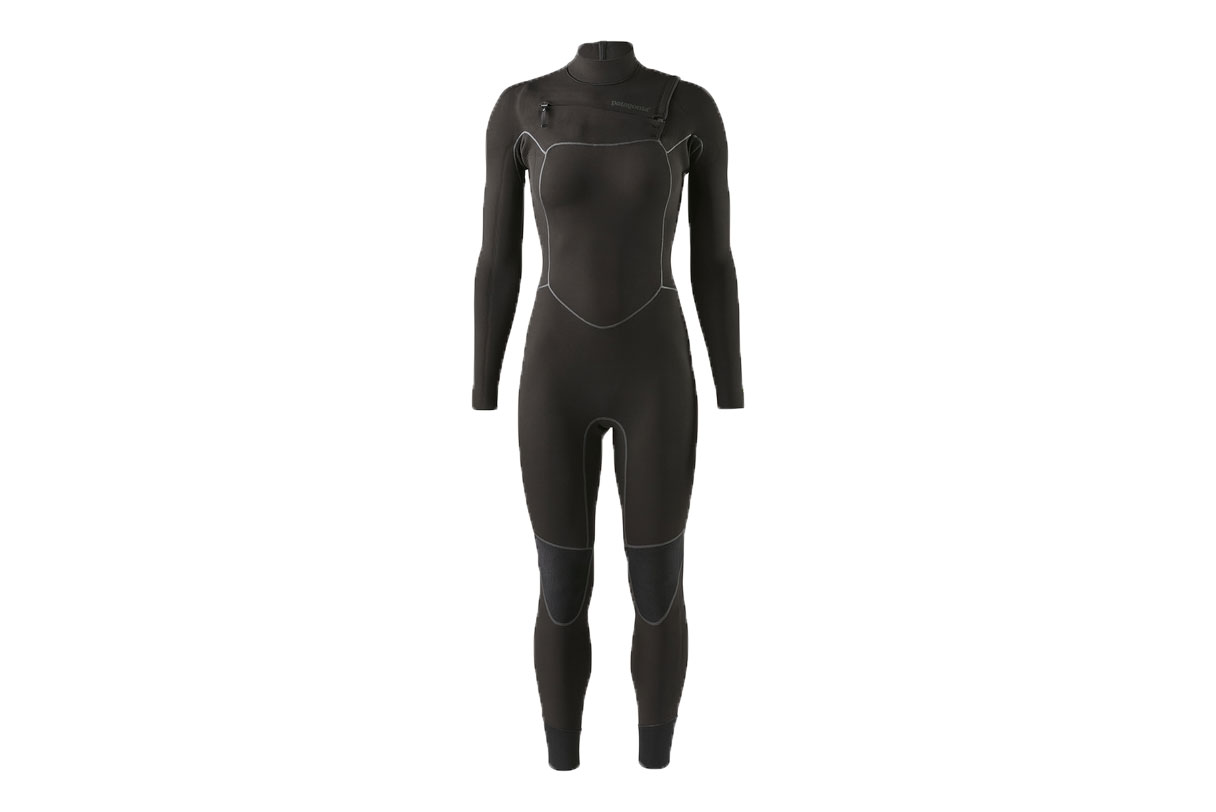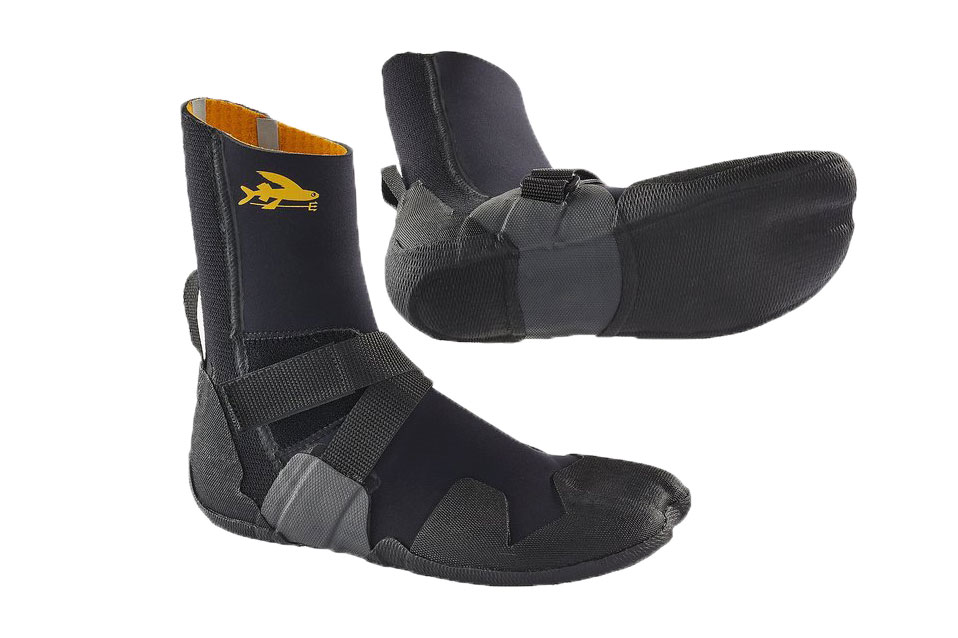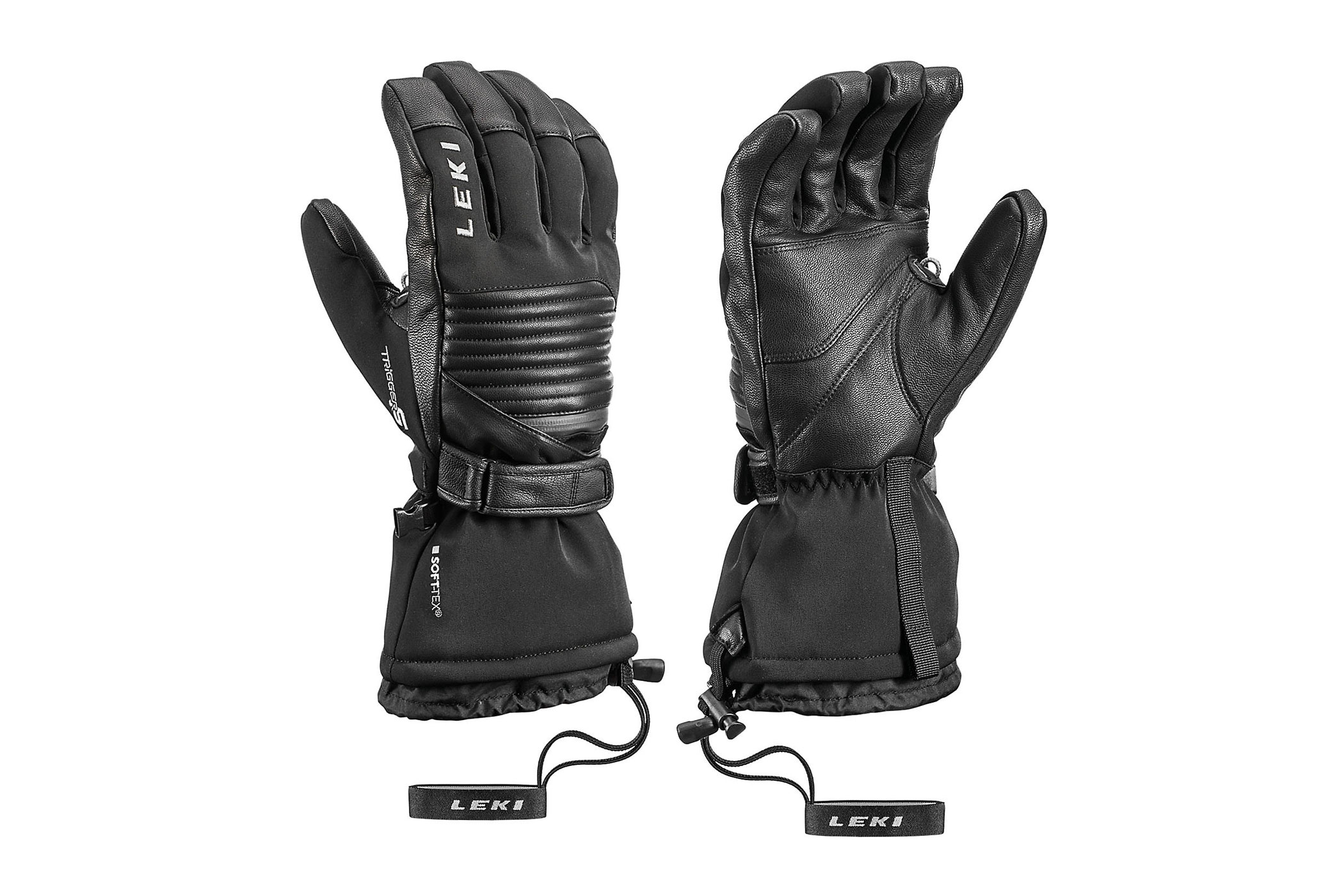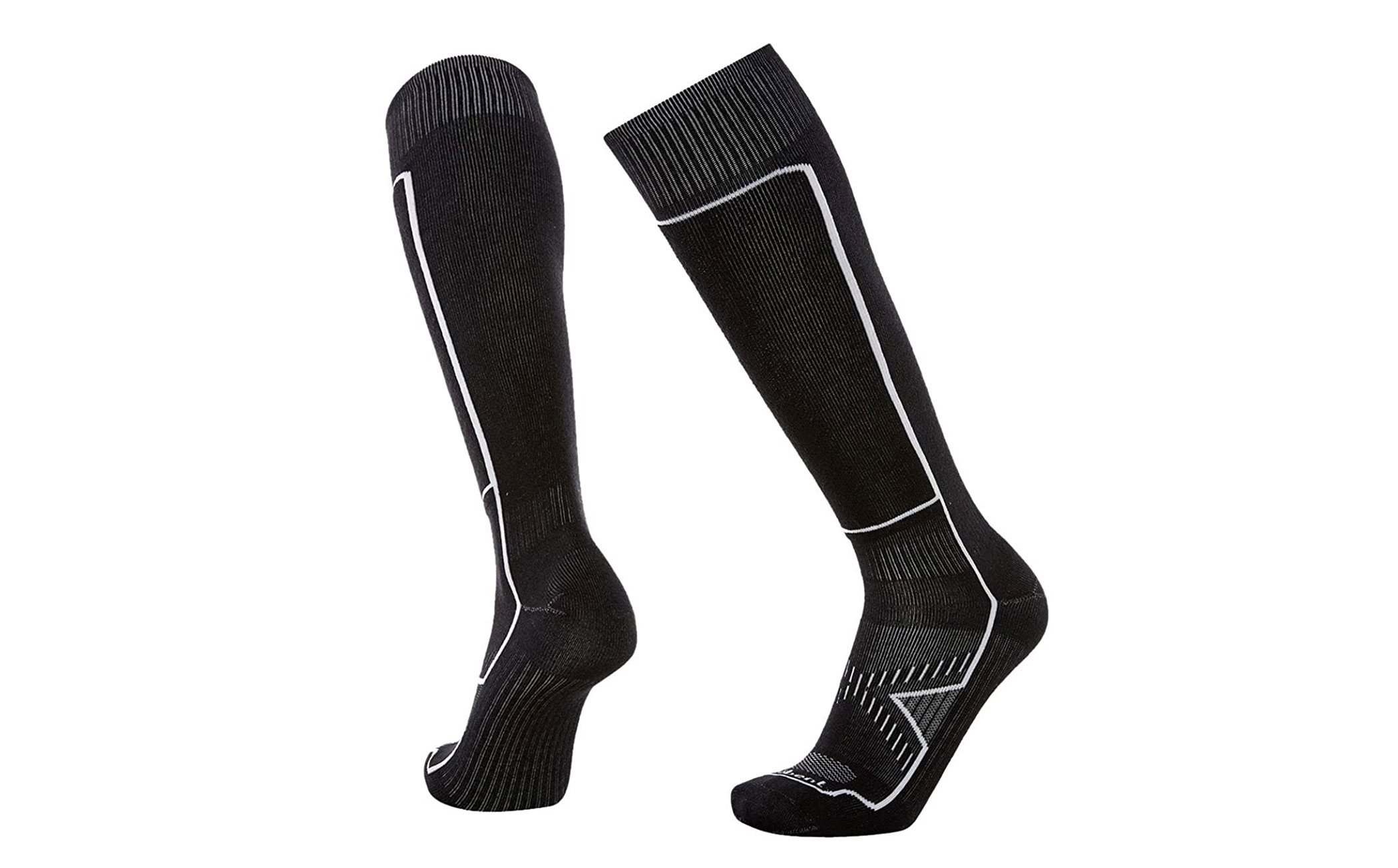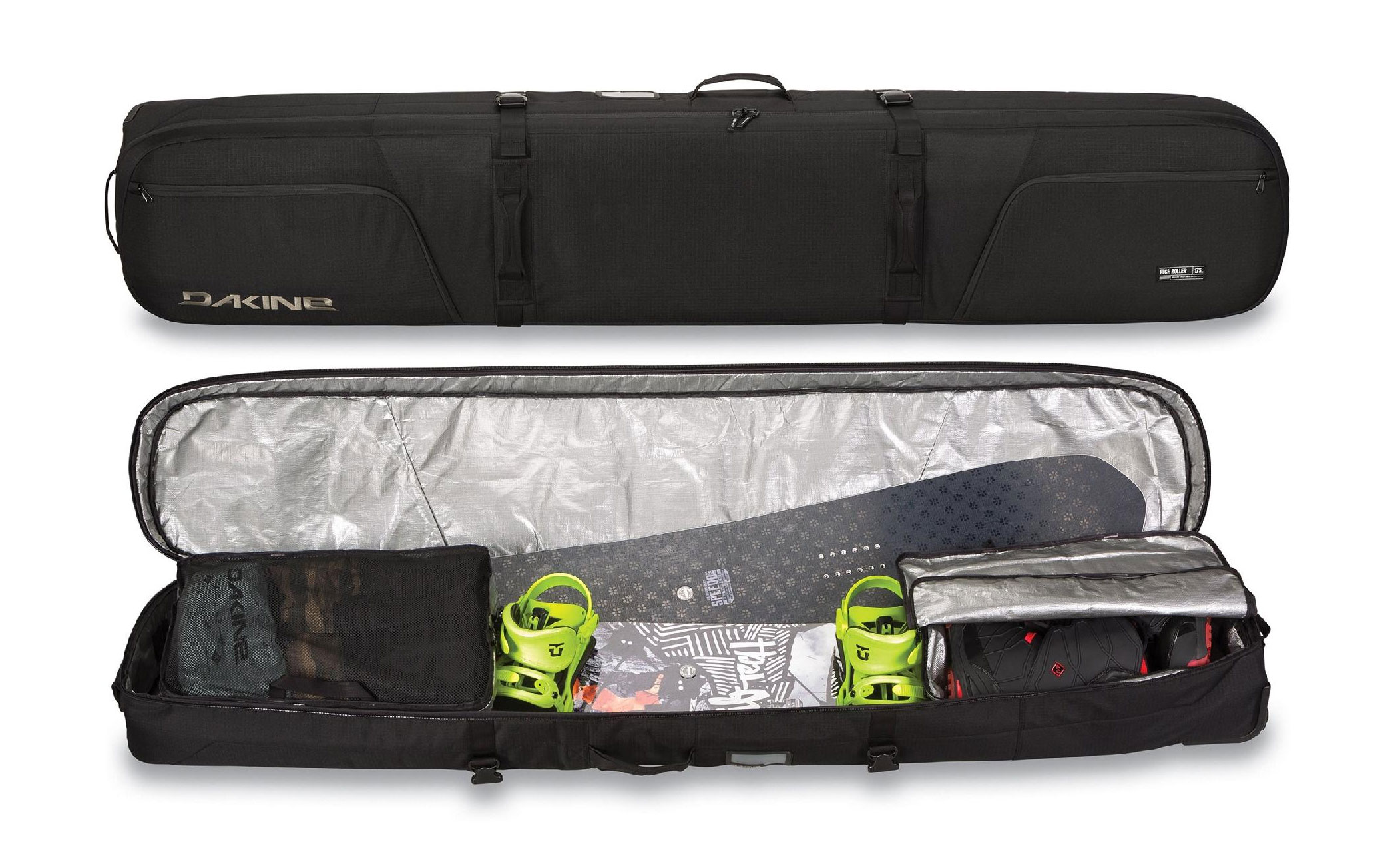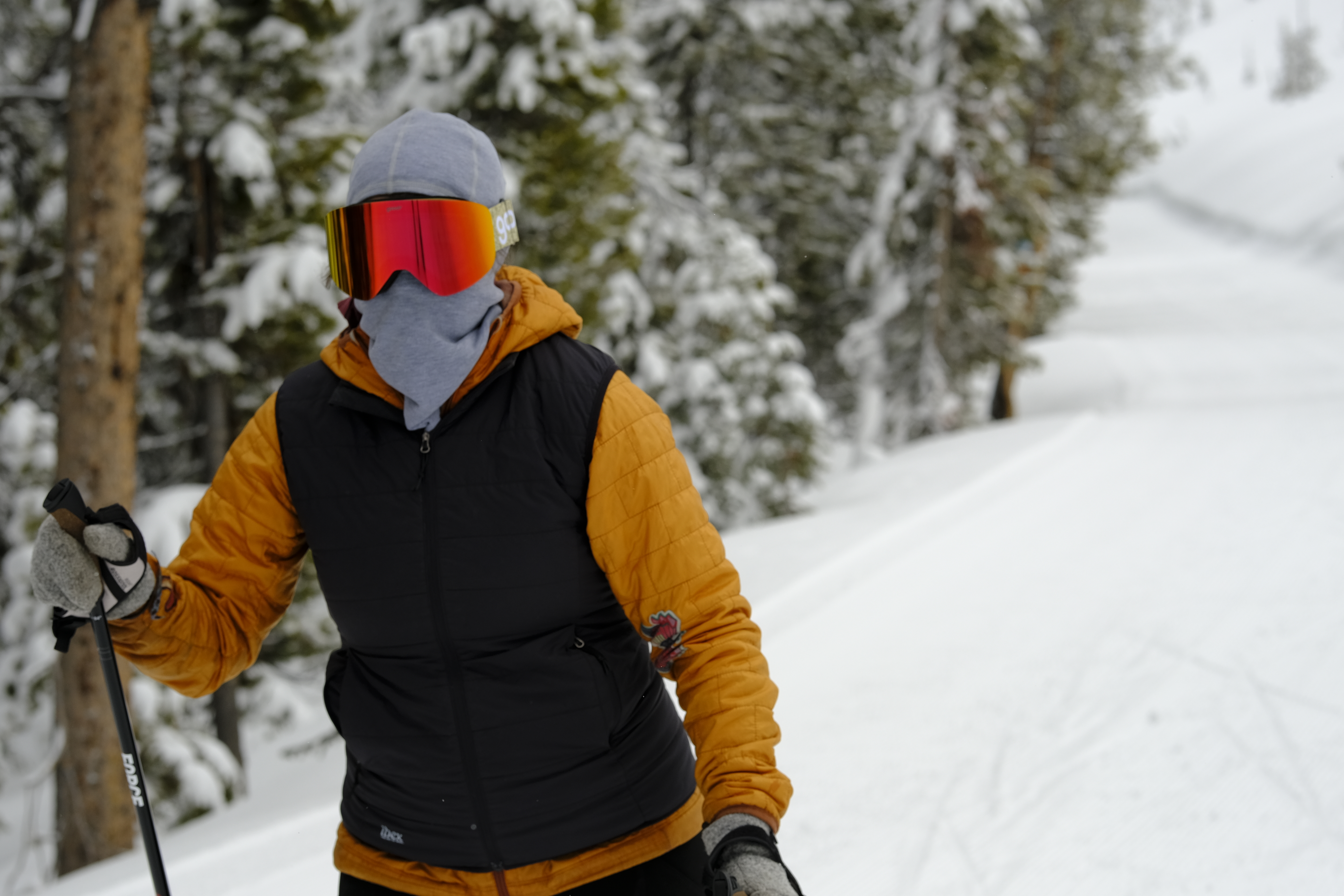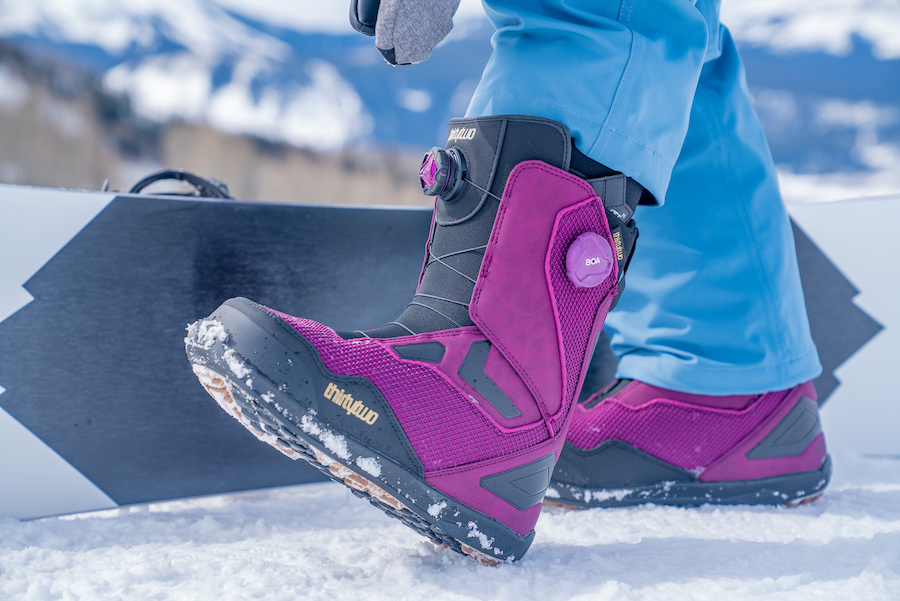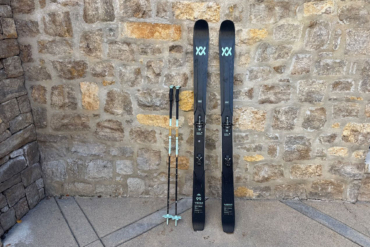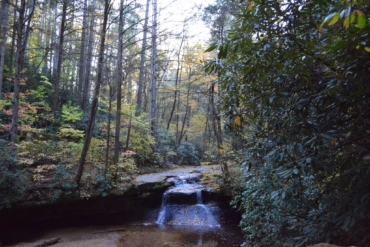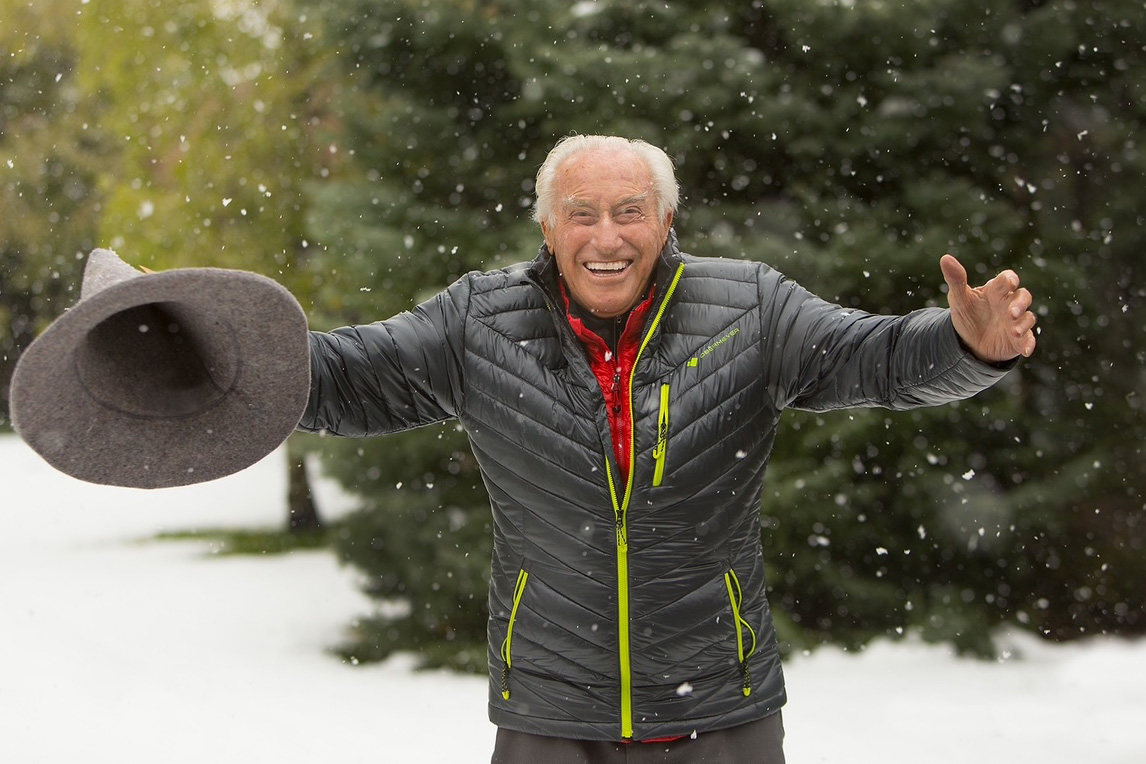Eager to cross the California Double off your bucket list? Here’s how to complete one of the globe’s only 24-hour sea-to-ski trips while being more eco-conscious.
Countless surf breaks pepper the Southern California coastline from Santa Barbara to San Diego. But if you want to fit surf laps and ski runs in the same day — also known as the California Double — then you need to head to San Clemente and the renowned surf breaks at San Onofre State Beach.
After ocean dawn patrol, it’s possible to drive northeast to Snow Summit Ski Resort in 2 hours and 10 minutes. This leaves you with just enough time to totally toast your quads with an afternoon ski or snowboard session.
Want to give it a shot? The snow season runs from November to March — here are some tips on where to go and what to bring. We even have a guide on how to travel and experience the California Double with a minimal carbon footprint.
Editor’s note: This trip was taken pre-COVID. At the time of publication, the below-mentioned beach and ski resort are open. Please check for travel restrictions before embarking.
California Double: How to Complete the Sea-to-Ski Trip
San Onofre Surf Beach
San Onofre State Beach is a popular, well-known place to play outside. The state beach consists of three sections: San Onofre Bluffs, San Mateo Campground, and San Onofre Surf Beach.
The lattermost features a handful of areas with surf breaks offering a range of wave sizes. We ventured to Surf Beach, which is identified by three surf breaks — The Point, Old Man’s, and Dogpatch.

San Onofre is an exposed beach and point break with swell year-round and the most consistency and wind in February. During that month, the average water temperature hits its lowest: with a range of 56-60 degrees Fahrenheit. The good news: During midwinter, the crowds are few and far between.
Overall, the swell is typically small to moderate and mellow. It’s ideal for beginners and longboarders, as well as veterans looking for a relaxed wave-after-wave morning. The waves were constant, clean, and about 4 feet high the day I surfed. The next evening, the swell was pretty flat with occasional 1.5-foot waves.
Snow Summit Ski Resort
Big Bear Mountain Resort owns two properties on the southeast edge of Big Bear Lake: Bear Mountain and Snow Summit. We ventured to the latter. Another ski area option in the area is Snow Valley Resort. It’s a shorter drive from San Onofre State Beach but was closed during our trip due to high winds.
Snow Summit’s season runs from November to March. The vertical drop is 1,200 feet from its 8,200-foot high point. In February, the conditions usually include one snowy day per week with an average 2-inch snowfall.

Snow Summit is also known to have the most consistent snow conditions in SoCal, due to its enormous snowmaking system. Historically, the average temperatures for February range from 22 to 47 degrees Fahrenheit, but the snowmaking can drop the warmth down a notch, so arrive with layers.
Aside from snow, this mountain has a great mix of terrain with 65% intermediate/advanced runs. But my favorite part? The stunning views of Big Bear Lake, especially from the black-diamond Log Chute, off of the East Mountain Xpress ski lift. Also, the vibe is approachable and family-friendly, which makes it feel accessible to all.
Tips for Eco-Friendly Travel
One negative variable about the California Double is the relatively high carbon footprint or traveler impact in a narrow time period. My goal became to not just complete the ski-to-surf mission but to try to do it as a responsible steward of the planet.
Offset Your Travel
First off, traveling by rig and plane from Crested Butte, Colorado (where I live), to Santa Ana, California, produced approximately 823 pounds of carbon, according to the Protect Our Winters Cost of Carbon calculator. Through the online app, I offset my carbon footprint by donating to improve forest management in the McCloud River Reserve near Mount Shasta, California ($5.81).
Go Electric
On the ground, we opted to drive an electric vehicle. We stayed overnight at the eco-conscious Ranch at Laguna Beach, where we could charge our e-vehicle overnight free of cost.
Additionally, the hotel has invested in a filtration system that recycles water for irrigation, saving 21.2 million gallons per year. And all glass on-site is crushed into sand for reuse projects, like pavement repairs.
Reuse
I also packed reusable utensils, and I tried to find outdoor apparel made with recycled materials. While this gear list isn’t comprehensive with recycled products or ones that are 100% eco-made, a growing number of outdoor and travel brands are expanding their goods into that arena. And this gear list is a good start.
California Double: The Gear I Used
Patagonia Women’s R2 Yulex Front-Zip Full Suit
The water conditions in February at San Onofre call for a 4/3mm wetsuit. Some folks may want a 5/3mm wetsuit. Given that I’ve done cold-water surfing, I felt comfortable going with the slightly lighter-weight Patagonia Women’s R2 Yulex Front-Zip Full Suit ($459). The R2 thickness is 3.5/3, meaning the material on the torso and thighs is 3.5 mm thick and the material on the arms and legs is 3 mm thick.
I was nervous regarding the size selection. I went with a size 6 (I’m almost 5’6” and about 140 pounds), and it fit great. The suit’s name is “front zip” but don’t let that fool you. Don’t accidentally pull the suit on backward as I did. Twice. There is a horizontal zipper above the chest, but the vertical, longer zipper should be behind you.
From an environmental standpoint, the exterior fabric is now 100% recycled polyester-spandex in addition to a completely recycled polyester lining. It’s soft and repurposes 18 single-use plastic bottles per suit. There’s also a neoprene-free natural rubber woven into the suit. Overall, the seams, material, and general profile are comfortable against skin and easy to pull on and off.
Check Price at PatagoniaPatagonia R3 Yulex Split Toe Booties
The water conditions in February at San Onofre pose the need for 3mm booties. Some people opt for even heavier foot coverage, but I went with the R3 Yulex Split Toe Booties ($41-85) — 3mm thickness recommended for 48- to 55-degree F water — and they performed great in the water.
Admittedly, before going into the water, my feet were extremely cold at sunrise on the beach. As soon as I started moving, though, they heated up. I sized up — a women’s 9.5 rather than my typical 8.5 — and they fit just right. I really like the lengthy ankle cuff, which adds extra protection from hitting any rocks or the surfboard, as well as warmth.
The tough pull ring on the heel is ideal for tugging on and removal. The internal split-toe design was not the most comfortable for me, which might be due to the long, narrow shape of my feet and toes. I didn’t notice any extra control or grip due to the toe separator and in general prefer a round-toe design.
The grippy soles offered excellent traction and protection on my board and the rocky shoreline. From an environmental standpoint, these booties are made with 85% natural rubber, 88% recycled polyester on the exterior, and 51% recycled polyester on the interior.
Check Price at PatagoniaPicture Exa
These women’s snow pants are pioneering eco-conscious materials. And the equally good news: performance was not sacrificed. The Exa pants ($200) are made from 64% recycled polyester, as well as a water repellency treatment that’s free of PFC (perfluorinated chemicals). PFC treatments have long offered water-repellency on technical fabrics, but they impact the environment — including human and animal health.
I was a bit concerned with the cut but was proved wrong. It isn’t too narrow nor baggy and is comfortable for dynamic movement. The two front pockets are spacious. And I’m a big fan of the ventilation zippers.
Despite the variable conditions, these pants (20/15 waterproof/breathability) managed my body temperature well. I never got cold, sweaty, or felt moisture enter. My one critique: the stretch waist gaiter is a first-time experience for me, and I’m not sure it’s necessary, but it’s surprisingly comfortable.
Check Price at BackcountryCheck Price at Moosejaw
Elan Women’s Ripstick 94
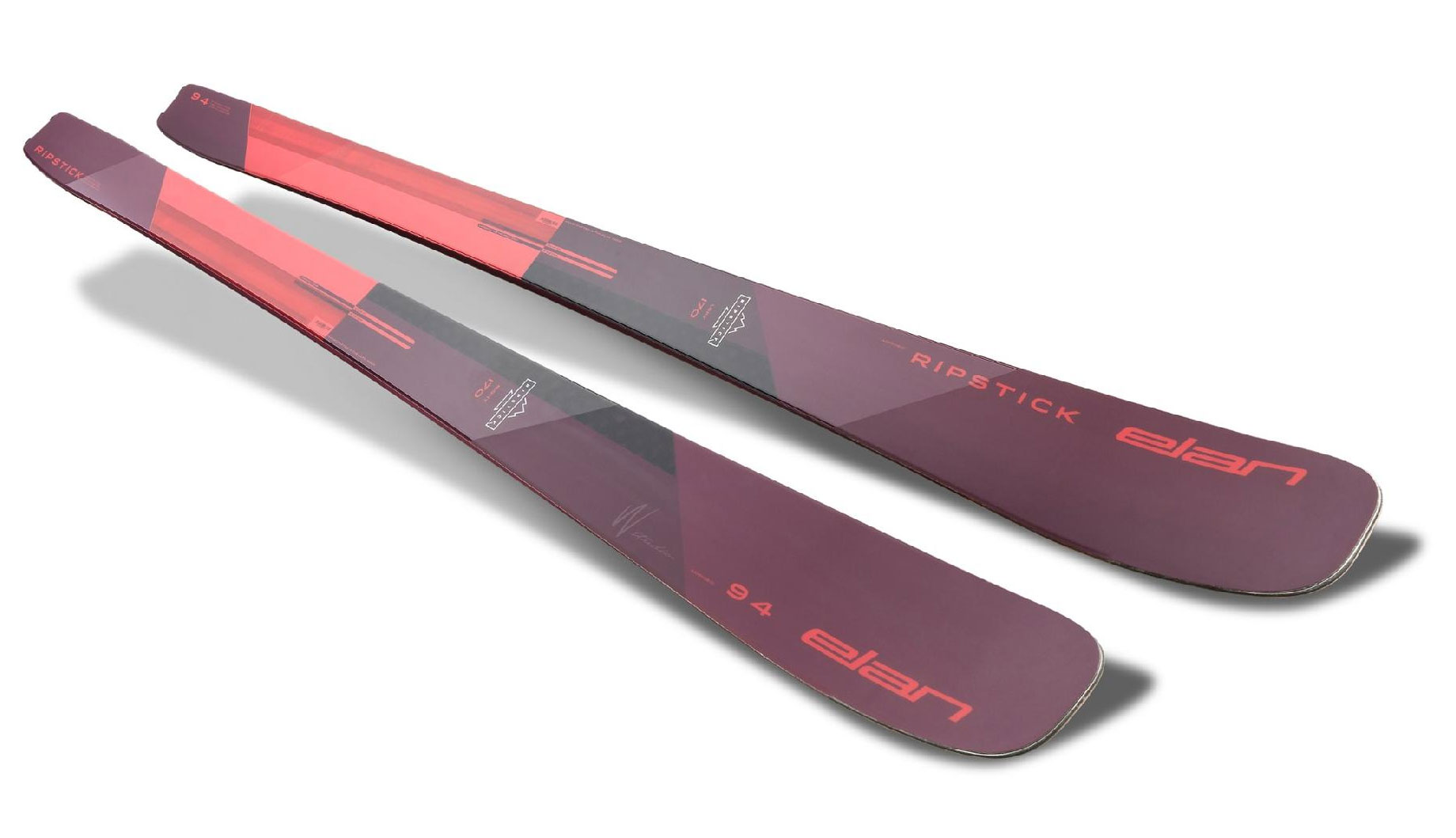
Based on the snow history of SoCal ski areas, I knew I’d most likely be carving mixed conditions including groomed hardpack, potentially ice, and possibly some power. I took the Elan Ripstick 94 ($600), which is designed as an all-around freeride ski.
The snow conditions weren’t great for tree turns. But the skis handled well on everything else from bumps and speedy steep turns to blue ice and chunder. (I’ve tested the skis in powder elsewhere, and they work there too thanks to the slightly rockered tips and overall shape.)
What I appreciate most about these skis is the great balance of lightness and flexibility to the stability, dampness, and torsional rigidity due to fiberglass reinforcement and carbon inserts in the wood core. But, I didn’t need to dig in for edge-to-edge movement and power transmission. (I was on a 170cm length, 95mm underfoot, and I’m about 5’6”, 140 pounds.)
I topped them off with the Salomon Warden 11 MNC. These robust, easy-to-clip-into, all-mountain bindings do a good job of damping vibrations, due to the absorption of the transfer pads.
Check Price at REICheck Price at BackcountryCheck Price at Amazon
LEKI Carbon 14S Lady Poles
The Carbon 14S ski poles for women(now 30% off at $104) are 100% carbon and super lightweight at less than 200 g for the 120cm length. Despite being light, they’re rigid and a nice length (nonadjustable) for hardpack groomers. While I prefer larger baskets for deep powder, these small racing baskets do fine on corduroy and ice.
What I like most about these ski poles is their compatibility with the Xplore XT S Lady gloves. The 360-degree frame strap fits seamlessly over the glove (and other gloves), so I never need to fumble around as the ski lift pulls up. And a functional clip-in system grabs a built-in loop on the glove, so you can’t accidentally drop either one.
Check Price at MoosejawLEKI Xplore XT S Lady Gloves
My hands tend to get cold when the wind rages. But the Xplore XT ($129) did a great job of barring frigid blasts. While I prefer thicker gloves, I also really enjoy dexterity and this design offers both fairly well. Plus, the cuff offers additional wrist protection, another vulnerable spot for dumping heat. Most of all, I like that these gloves are water-resistant and that there’s a vent in case your hands heat up.
Bonus: As mentioned, these gloves are compatible with the built-in lock-in system on the Carbon 14S Lady Poles.
Check Price at AmazonCheck Price at Moosejaw
Le Bent Le Sock Snow Light
Socks are such a personal choice and are key for healthy feet. The Le Sock Snow Light socks ($27) did a great job of moisture management and warmth that kept my feet protected on a gusty day (about 20 degrees F with wind gusts) on the slopes. (I might go with a medium-weight sock next time because my extremities got cold at the end of the day.)
Compared to other ski socks I’ve used, the blend was noticeably soft against skin — but not silky or slick — with a mix of rayon from bamboo and nylon followed by merino wool.
Overall, the sock stayed put without bunching or pinching. And the targeted cushioning on top of the shin and underfoot adds comfort.
Check Price at AmazonDakine High Roller Snowboard Bag
My life partner tested the Dakine High Roller Snowboard Bag ($210-230) on this trip. And he recommends it for its ability to securely, safely transport a snowboard and gear, with plenty of spaciousness and durability. Beyond a snowboard and boots, the interior of the bag also fit all of his outerwear, base layers, goggles, and helmet.
Two exterior pockets fit his casual clothes and toiletries, so he didn’t need to bring other luggage. The handle was comfortable, bag entry and exit was smooth, and it was easy to transport. Plus, the 360-padded protection, YKK main zipper, and oversized 9cm urethane wheels all proved to be extremely durable and protective.
One drawback: “There wasn’t much rigidity in the bag. If I picked up one end, it would bow and bounce, which was annoying,” he said.
Check Price at REICheck Price at Backcountry
2020 Chevrolet Bolt EV

The 2020 Bolt EV (starting at $37,495) features a higher range at 259 miles. The battery was pleasantly quiet — I could only hear it pre-sunrise with no other ambient sounds. I appreciated the heated steering wheel and seats. And beyond comfort, they save energy to help extend the battery life, due to less use of ventilated heat.
Cargo space is important for the California Double. For the two of us, we rented surfboards, but we had the Dakine High Roller Snowboard Bag, Sportube Series 3, a duffle, and two backpacks.
We first drove with the snowboard and skis on a rack, which was most comfortable — until the wind picked up. We were concerned about the gear flying off the top and our electric efficiency was declining, which we determined due to the Bolt EV Energy screen that breaks downrange impacts by technique, terrain, climate settings, and outside temperature.
So, we put the skis and snowboard in the car (not inside the carry cases, so they’d fit) and it was cozy but worked. If we pushed it, we could fit a third person, duffel, and another set of skis and snowboard.
At home, I don’t drive an electric vehicle, so I was a bit nervous to venture out of the city and into the mountains, loaded down with gear. But with some planning ahead, the vehicle worked really well for our trip. There’s a gamification component that makes the driving fun while extending range: a low mode that doubles as regenerative braking, as it recharges the battery when you remove your foot from the accelerator.
It took some getting used to, but it worked extremely well on hairpin turns and downhills. Paired with the cruise control, we boosted our efficiency up to an average of 3.5 miles per kilowatt-hour on the way back to the coast from the mountains.
Altogether, we charged the battery at our hotel twice and at a shopping center parking lot (0.27 per minute) via a Level 3 charging station — aka a DC Fast Charger, capable of charging to 60 to 100 miles of range in 20 minutes — we found through the EVgo Electric Vehicle (EV) Charging Station app.
Check Price at Chevrolet

